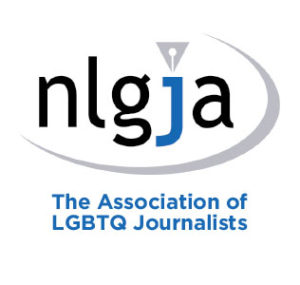 NLGJA – The Association of LGBTQ Journalists is made up of working journalists and media professionals. We are not an advocacy group. Our mission is to ensure fair and accurate coverage of issues that affect LGBTQ people. Three transgender people have been reported dead in the recent Oakland warehouse fire. NLGJA would like to offer tips to journalists covering the tragedy to ensure that the subsequent coverage remains fair and accurate.
NLGJA – The Association of LGBTQ Journalists is made up of working journalists and media professionals. We are not an advocacy group. Our mission is to ensure fair and accurate coverage of issues that affect LGBTQ people. Three transgender people have been reported dead in the recent Oakland warehouse fire. NLGJA would like to offer tips to journalists covering the tragedy to ensure that the subsequent coverage remains fair and accurate.
Many newsrooms have questions about how to cover people who are or may be transgender. NLGJA is here to help you ensure your coverage is not only fair, but accurate.
Here are a few tips, as well as some information from our stylebook on how to handle things such as pronouns and terminology. There’s even more on our website, NLGJA.org.
Transgender people should be referred to by the name and gender with which they identify or identified. Some transgender people choose to take hormones or have medical procedures, but that’s not what determines the correct name and pronoun to use. A person’s stated gender identity should guide word use.
Here are just a few additional entries from NLGJA’s LGBT Stylebook regarding transgender coverage:
transgender
Refers to individuals whose gender identity and/or expression may not match their physical, sexual characteristics or sex assigned at birth. Some female and male cross-dressers, drag queens or kings, female or male impersonators and intersex individuals may also identify as transgender. Use the name and personal pronouns that are consistent with how the individual lives publicly. When possible, ask which term the source prefers. Do not use “transgendered.” Offensive when used as a noun; use “transgender people,” “transgender man” or “transgender woman.” In cases where space is an issue, such as headlines, using “trans” as a shorthand adjectival form is acceptable.
transgender woman
A person who was assigned male at birth but identifies and/or lives as a woman. In statistics, the abbreviation MTF, or male-to-female, may be used. Usually shortened colloquially to trans woman, it should be used only when the subject prefers it and when transgender status is germane; otherwise, identify a news subject as a woman.
transgender man
A person who was assigned female at birth but identifies and/or lives as a man. In statistics, the abbreviation FTM, or female-to-male, may be used. Usually shortened colloquially to trans man, it should be used only when the subject prefers it and when transgender status is germane; otherwise, identify a news subject as a man.
For more information, visit NLGJA’s LGBT Stylebook.
NLGJA is happy to be a professional resource for you. We offer a stylebook on common word choice and tip sheets on issues that affect our communities. You can find both at www.nlgja.org/resources.
NLGJA also has professional development available through our Newsroom Outreach Program. The project was designed to help newsrooms better understand the complexities of covering our diverse communities, while remaining unbiased. Please feel free to contact us if we can be of assistance. We have members in local, national and international newsrooms who are experienced covering these types of issues.
If you find coverage that may be questionable, please feel free to report it to NLGJA’s Rapid Response Task Force. Since its inception, the Rapid Response Task Force has not only informed countless newsrooms about appropriate terminology and the appearance of bias, but has also used these contacts to spread awareness about issues facing the LGBTQ community.
Finally, NLGJA isn’t just for LGBTQ people. As your colleagues, we are here for all journalists. Please feel free to reach out to our leaders and members for guidance and assistance.
Thank you for your time and attention.
Sincerely,
NLGJA – The Association of LGBTQ Journalists
